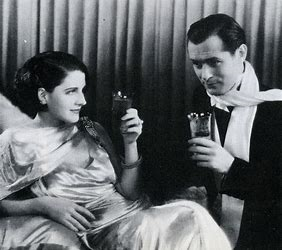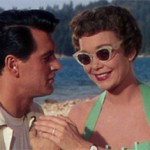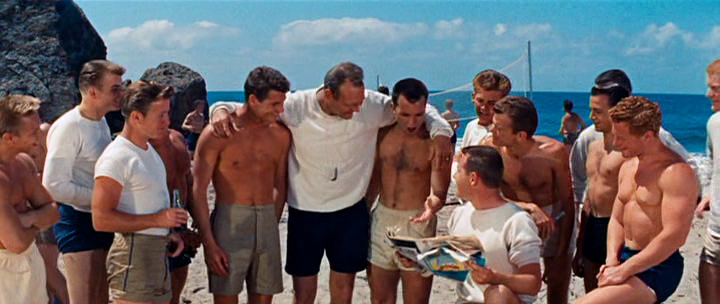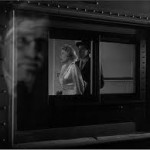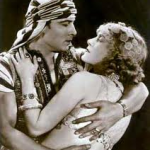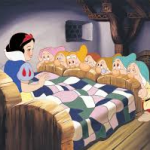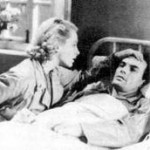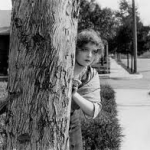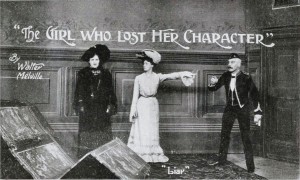Our discussion of Busman’s Honeymoon covered genre – especially different aspects of melodrama; adaptation; the notion of authorship; and casting.
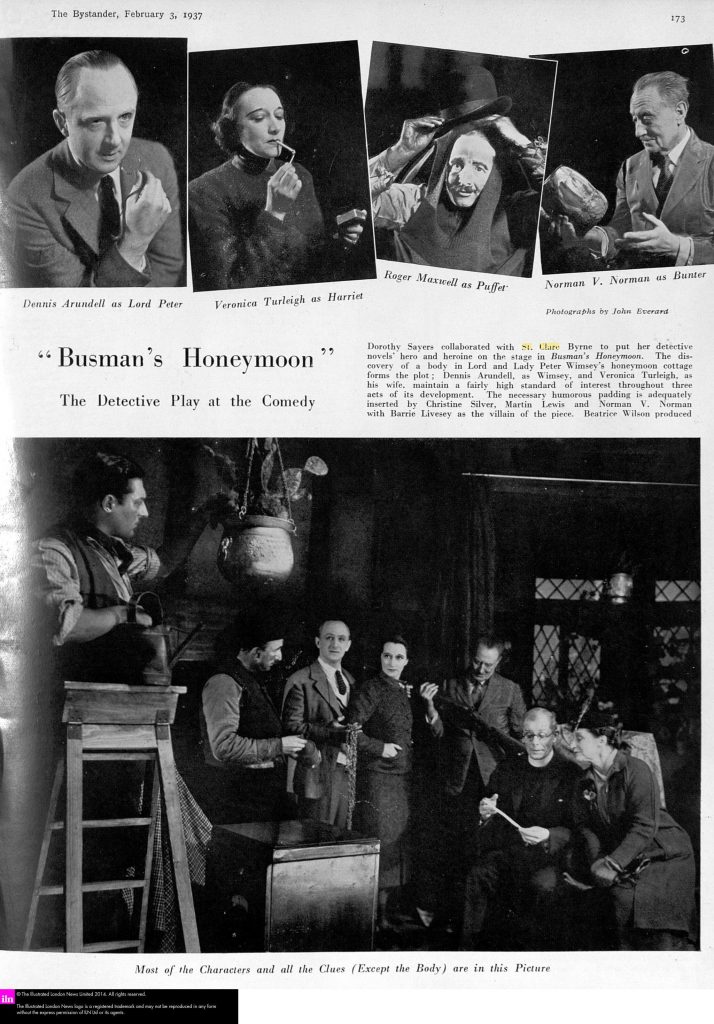 The film credits both Dorothy L Sayers’ 1937 novel, Busman’s Honeymoon, and Sayers’ and Muriel St Clare Byrne’s 1936 play of the same name. But we primarily discussed the film in relation to Sayers’ novel. This is partly because our theme for this term is adaptations of detective novels written by women. There is also a practical reason: the play is far less known today, and more difficult to access, than the novel. The two authors of the play nonetheless raise interesting questions about authorship which I return to towards the end of this post.
The film credits both Dorothy L Sayers’ 1937 novel, Busman’s Honeymoon, and Sayers’ and Muriel St Clare Byrne’s 1936 play of the same name. But we primarily discussed the film in relation to Sayers’ novel. This is partly because our theme for this term is adaptations of detective novels written by women. There is also a practical reason: the play is far less known today, and more difficult to access, than the novel. The two authors of the play nonetheless raise interesting questions about authorship which I return to towards the end of this post.
 We discussed the titles of the novel and the film. ‘Busman’s Honeymoon’ suggests a mix of genres. The similar term ‘Busman’s Holiday’ refers to a vacation spent performing similar tasks to one’s ‘day job’. Lord Peter Wimsey investigates crime and Harriet Vane writes detective novels. We can therefore anticipate that their married bliss (significantly they are on honeymoon – implying romance – rather than on holiday) will be interrupted by crime. This is indicated more strongly in the subtitle to Sayers’ novel: ‘a love story with detective interruptions’. The title of the film on its US release, Haunted Honeymoon, is less explicit than the film’s UK title, perhaps the phrase is less well-known in the US. It still suggests that something unusual will occur during Peter and Harriet’s honeymoon in their new home.
We discussed the titles of the novel and the film. ‘Busman’s Honeymoon’ suggests a mix of genres. The similar term ‘Busman’s Holiday’ refers to a vacation spent performing similar tasks to one’s ‘day job’. Lord Peter Wimsey investigates crime and Harriet Vane writes detective novels. We can therefore anticipate that their married bliss (significantly they are on honeymoon – implying romance – rather than on holiday) will be interrupted by crime. This is indicated more strongly in the subtitle to Sayers’ novel: ‘a love story with detective interruptions’. The title of the film on its US release, Haunted Honeymoon, is less explicit than the film’s UK title, perhaps the phrase is less well-known in the US. It still suggests that something unusual will occur during Peter and Harriet’s honeymoon in their new home.
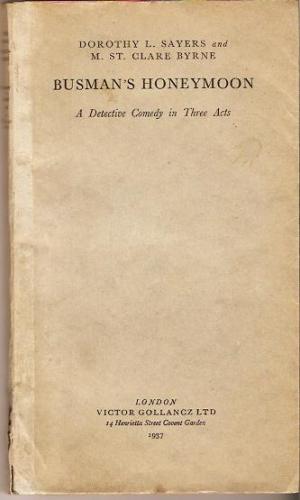 We began our discussion on genre by commenting on this genre hybridity in more detail. The film’s genres are more equal than in the novel, which after all places primacy on a love story which is ‘interrupted’ by detection. The film switches between romance and detection more readily. Peter and Harriet’s jokey banter as they agree to stop investigating and writing about crime is juxtaposed with the crime itself. In this, the film more closely resembles the play’s subtitle (‘A Detective Comedy in Three Acts’) than the novel’s. The novel and the film begin with a focus on Lord Peter Wimsey (Robert Montgomery) and Harriet (Constance Cummings). But the film more quickly incorporates the crime by depicting the victim Noakes (Roy Emerton) and his relations with those around him. The film paints Noakes as an unpleasant man, with various people in the village shown to have motive for removing him. Noakes’ niece, Miss Agnes Twitterton (Joan Kemp-Welch), is revealed to be his heir, and in want of money in order to keep her fiancé, Frank Crutchley (Robert Newton). Frank has an additional monetary motive – Noakes owes him £10. The village policeman Constable Sellon (James Carney) also has a financial reason as Noakes is blackmailing him. Cleaning lady Mrs Ruddle (Lou
We began our discussion on genre by commenting on this genre hybridity in more detail. The film’s genres are more equal than in the novel, which after all places primacy on a love story which is ‘interrupted’ by detection. The film switches between romance and detection more readily. Peter and Harriet’s jokey banter as they agree to stop investigating and writing about crime is juxtaposed with the crime itself. In this, the film more closely resembles the play’s subtitle (‘A Detective Comedy in Three Acts’) than the novel’s. The novel and the film begin with a focus on Lord Peter Wimsey (Robert Montgomery) and Harriet (Constance Cummings). But the film more quickly incorporates the crime by depicting the victim Noakes (Roy Emerton) and his relations with those around him. The film paints Noakes as an unpleasant man, with various people in the village shown to have motive for removing him. Noakes’ niece, Miss Agnes Twitterton (Joan Kemp-Welch), is revealed to be his heir, and in want of money in order to keep her fiancé, Frank Crutchley (Robert Newton). Frank has an additional monetary motive – Noakes owes him £10. The village policeman Constable Sellon (James Carney) also has a financial reason as Noakes is blackmailing him. Cleaning lady Mrs Ruddle (Lou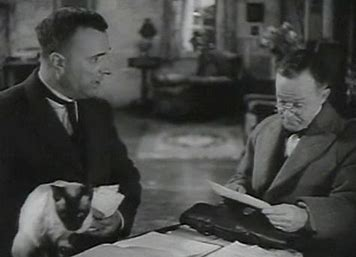 ise Hampton) is another person who has been threatened by Noakes; he caught her stealing some of his fuel. Sure enough, Noakes is then knocked unconscious, presumably killed. This greatly contrasts with the novel as Noakes is only spoken of since we are introduced to the suspects once Peter and Harriet arrive at their new house.
ise Hampton) is another person who has been threatened by Noakes; he caught her stealing some of his fuel. Sure enough, Noakes is then knocked unconscious, presumably killed. This greatly contrasts with the novel as Noakes is only spoken of since we are introduced to the suspects once Peter and Harriet arrive at their new house.
 We noticed that the film’s foregrounding of the crime also increased aspects of melodrama – especially male melodrama. Mystery is inherent in films which focus on detectives, and Violence is also often implied if the plot involves a murder. The film’s setting up of several suspects, each of whom is filmed creeping around the village and having unpleasant interactions with the victim, amplifies the mystery and means that the violence is enacted on screen. The chase aspect is also present. Again, this is emphasised in the film in comparison to the novel. In the latter when the policeman suspect, Constable Sellon, goes missing this is for a very short period of time. His discovery by a sergeant is only revealed to the reader in retrospect – perhaps partly because Peter is not involved. The film not only shows the chase, but, as with Noakes’ murder, the lead up to it. It inserts a car crash between a lorry and Lord Peter’s car in the centre of the village which is inadvertently caused by Constable Sellon. Constable Sellon flees the scene and the cinematography revels in the Devonshire landscape to picture policemen hunting their colleague. This is oddly anti-climactic as the audience does not necessarily think Constable Sellon is the guilty party; indeed, when Peter catches up with the fugitive he reveals that he does not believe in Constable Sellon’s guilt either. The chase scenes reminded us of Alfred Hitchcock’s The 39 Steps (1935). But they play a far less central role in Busman’s Honeymoon and are shorter in duration than in either The 39 Steps or last time’s screening, Hitchcock’s Young and Innocent (1938). (see our discussion
We noticed that the film’s foregrounding of the crime also increased aspects of melodrama – especially male melodrama. Mystery is inherent in films which focus on detectives, and Violence is also often implied if the plot involves a murder. The film’s setting up of several suspects, each of whom is filmed creeping around the village and having unpleasant interactions with the victim, amplifies the mystery and means that the violence is enacted on screen. The chase aspect is also present. Again, this is emphasised in the film in comparison to the novel. In the latter when the policeman suspect, Constable Sellon, goes missing this is for a very short period of time. His discovery by a sergeant is only revealed to the reader in retrospect – perhaps partly because Peter is not involved. The film not only shows the chase, but, as with Noakes’ murder, the lead up to it. It inserts a car crash between a lorry and Lord Peter’s car in the centre of the village which is inadvertently caused by Constable Sellon. Constable Sellon flees the scene and the cinematography revels in the Devonshire landscape to picture policemen hunting their colleague. This is oddly anti-climactic as the audience does not necessarily think Constable Sellon is the guilty party; indeed, when Peter catches up with the fugitive he reveals that he does not believe in Constable Sellon’s guilt either. The chase scenes reminded us of Alfred Hitchcock’s The 39 Steps (1935). But they play a far less central role in Busman’s Honeymoon and are shorter in duration than in either The 39 Steps or last time’s screening, Hitchcock’s Young and Innocent (1938). (see our discussion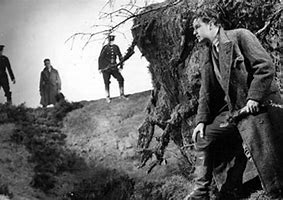 here: https://blogs.kent.ac.uk/melodramaresearchgroup/2020/01/21/summary-of-discussion-on-young-and-innocent/) This perhaps comments on the ability of film to show rather than tell. While novels are of course not limited to telling, and can ‘show’ via description of the characters’ behaviour and though dialogue, the visual image can be more vivid.
here: https://blogs.kent.ac.uk/melodramaresearchgroup/2020/01/21/summary-of-discussion-on-young-and-innocent/) This perhaps comments on the ability of film to show rather than tell. While novels are of course not limited to telling, and can ‘show’ via description of the characters’ behaviour and though dialogue, the visual image can be more vivid.
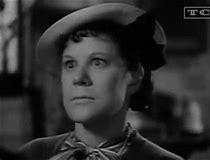 As was the case during our discussion of Young and Innocent, we noticed elements of more traditional melodrama in Busman’s Honeymoon – suffering women. This is less of a focus in Busman’s Honeymoon than the male melodrama, since the suffering mostly relates to supporting characters. However, the suffering, like the aspects of male melodrama, also seems emphasised in the film in comparison to the novel. While the novel delays revelations about Noakes’ murder, and Miss Twitterton’s and Frank’s relationship, the film divulges this information sooner. This means that we are aware of Miss Twitterton’s shabby treatment at Frank’s hands (including his cheating on her with Polly (Googie Withers)) for a longer period. Miss Twitterton also relives her suffering as she relates what has happened to her to Peter and Harriet when they visit her house. Miss Twitterton’s distress, while acute, is short-lived – she soon pulls herself together. This was also the case when she was, understandably, affected at the finding of her Uncle’s body.
As was the case during our discussion of Young and Innocent, we noticed elements of more traditional melodrama in Busman’s Honeymoon – suffering women. This is less of a focus in Busman’s Honeymoon than the male melodrama, since the suffering mostly relates to supporting characters. However, the suffering, like the aspects of male melodrama, also seems emphasised in the film in comparison to the novel. While the novel delays revelations about Noakes’ murder, and Miss Twitterton’s and Frank’s relationship, the film divulges this information sooner. This means that we are aware of Miss Twitterton’s shabby treatment at Frank’s hands (including his cheating on her with Polly (Googie Withers)) for a longer period. Miss Twitterton also relives her suffering as she relates what has happened to her to Peter and Harriet when they visit her house. Miss Twitterton’s distress, while acute, is short-lived – she soon pulls herself together. This was also the case when she was, understandably, affected at the finding of her Uncle’s body.
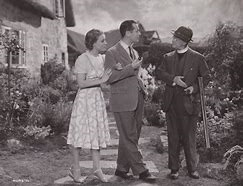 The film’s other main instance of high emotion relates to Harriet, after the murder has been committed but before it has been discovered. The morning after Peter and Harriet’s wedding night we hear a loud shot. Harriet rushes out of the house, terrified, and screaming for Peter. The matter is soon neutralised, and even turned comical; the shooter is revealed to be the local reverend Simon Goodacre (Aubrey Mallalieu), and the victim not Peter, but a stoat. This is an invention of the film, as the novel introduces the clergyman in a more traditional manner.
The film’s other main instance of high emotion relates to Harriet, after the murder has been committed but before it has been discovered. The morning after Peter and Harriet’s wedding night we hear a loud shot. Harriet rushes out of the house, terrified, and screaming for Peter. The matter is soon neutralised, and even turned comical; the shooter is revealed to be the local reverend Simon Goodacre (Aubrey Mallalieu), and the victim not Peter, but a stoat. This is an invention of the film, as the novel introduces the clergyman in a more traditional manner.
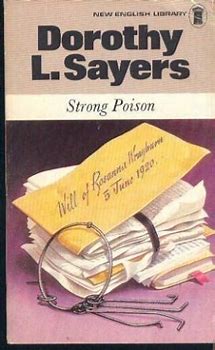 Harriet’s brief moment of suffering caused us to reflect on the fact that the film also has some gothic tropes. The house in which the murder has been committed is one bought for new bride Harriet by her wealthy husband Peter. This brings together both the old dark house often present as a setting in gothic narratives, and the idea of the unwise hasty marriage. The novel begins with a flurry of letters between various people, including members of Peter’s family, which comment on his and Harriet’s surprise recent elopement. These reveal that the pair did have a big church wedding planned, but that they decided on a smaller, more private, gathering. While the last-minute change of venue has caused consternation to some, it is made clear that Peter and Harriet have known each other for a long time. Those familiar with Sayers’ previous Wimsey novels would know that Peter and Harriet met several years earlier (in the 5th Wimsey novel, Strong Poison, published in 1930) when he defended her on a charge of murder against her live-in-lover. Harriet also appears, alongside Wimsey, in the 7th, Have His Carcase (1932) and the 10th , Gaudy Night (1935), novels of the series.
Harriet’s brief moment of suffering caused us to reflect on the fact that the film also has some gothic tropes. The house in which the murder has been committed is one bought for new bride Harriet by her wealthy husband Peter. This brings together both the old dark house often present as a setting in gothic narratives, and the idea of the unwise hasty marriage. The novel begins with a flurry of letters between various people, including members of Peter’s family, which comment on his and Harriet’s surprise recent elopement. These reveal that the pair did have a big church wedding planned, but that they decided on a smaller, more private, gathering. While the last-minute change of venue has caused consternation to some, it is made clear that Peter and Harriet have known each other for a long time. Those familiar with Sayers’ previous Wimsey novels would know that Peter and Harriet met several years earlier (in the 5th Wimsey novel, Strong Poison, published in 1930) when he defended her on a charge of murder against her live-in-lover. Harriet also appears, alongside Wimsey, in the 7th, Have His Carcase (1932) and the 10th , Gaudy Night (1935), novels of the series.
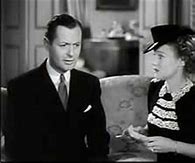 By contrast, the film introduces us to Peter and Harriet prior to their wedding. The film fleetingly pictures a society announcement of the upcoming wedding, noting that it is ‘long-awaited’. In the opening scene, Peter and Harriet are carrying out an inventory of wedding gifts, which include numerous, very gothic-looking, candelabras. Their relationship seems jokey but is not as obviously of such long-standing as in the novels. We do not see the wedding (this seems to occur at the time Noakes’ murder is taking place on screen), but we do glimpse Harriet trying on her wedding dress. Significantly, this is a traditional white gown. A letter from Peter’s sister-in-law, Helen, cattily comments that Harriet had the ‘sense and the propriety’ not to wear ‘white satin and orange blossom’ due to her scandalous past. We thought that the film therefore portrayed Harriet as less experienced, especially as there is no mention of her previous lover. While this is unsurprising, due to what was considered to be in good taste in the mass medium of film at the time, it can also be seen to position her more closely to the heroine of gothic narratives.
By contrast, the film introduces us to Peter and Harriet prior to their wedding. The film fleetingly pictures a society announcement of the upcoming wedding, noting that it is ‘long-awaited’. In the opening scene, Peter and Harriet are carrying out an inventory of wedding gifts, which include numerous, very gothic-looking, candelabras. Their relationship seems jokey but is not as obviously of such long-standing as in the novels. We do not see the wedding (this seems to occur at the time Noakes’ murder is taking place on screen), but we do glimpse Harriet trying on her wedding dress. Significantly, this is a traditional white gown. A letter from Peter’s sister-in-law, Helen, cattily comments that Harriet had the ‘sense and the propriety’ not to wear ‘white satin and orange blossom’ due to her scandalous past. We thought that the film therefore portrayed Harriet as less experienced, especially as there is no mention of her previous lover. While this is unsurprising, due to what was considered to be in good taste in the mass medium of film at the time, it can also be seen to position her more closely to the heroine of gothic narratives.
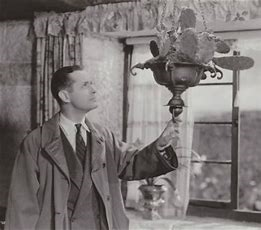 While we mostly compared the film to the novel to illuminate the former’s genre, especially melodrama, we also commented on the basic mechanics of the murder plot and representations of characters. Unlike Young and Innocent, Busman’s Honeymoon retained the same murderer and motive as its source novel. Frank killed Noakes for financial motives. We especially noted that the film stuck rigidly to Frank’s ingenious fake alibi. Frank set up a heavy plant pot, attached by wire to the radio cabinet; this struck Noakes when he opened the lid, as was his habit, at 9pm – a time at which Frank made sure he was seen elsewhere.
While we mostly compared the film to the novel to illuminate the former’s genre, especially melodrama, we also commented on the basic mechanics of the murder plot and representations of characters. Unlike Young and Innocent, Busman’s Honeymoon retained the same murderer and motive as its source novel. Frank killed Noakes for financial motives. We especially noted that the film stuck rigidly to Frank’s ingenious fake alibi. Frank set up a heavy plant pot, attached by wire to the radio cabinet; this struck Noakes when he opened the lid, as was his habit, at 9pm – a time at which Frank made sure he was seen elsewhere.
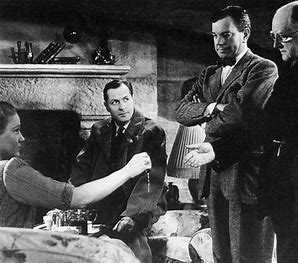 The film was very faithful to the novel in this respect, and most of the changes which heightened elements of melodrama simply moved aspects from later, to earlier, in the narrative. Moments at which the film diverged more strongly from the novel had a bigger impact on the characters, especially Harriet. In addition to small alterations which emphasise Harriet’s links to the gothic heroine, other elements give her less independence. Harriet’s means of earning her own income – writing detective novels – are denied to her in the film as she and Peter agree to both give up detecting. This affects Harriet more because Peter is very wealthy, and his work unpaid, while she will be dependent on him for money. In the novel, however, Harriet tells a journalist that she will continue writing; furthermore, she reveals that Peter is supportive of her stance: ‘he certainly doesn’t object- in fact I think he entirely approves’. The nature of Harriet’s work is also disparaged in the film. During the wedding gift inventory scene Harriet comments that Peter’s family thinks her novels are ‘junk’. This is not something Sayers states in the novel – perhaps because she herself is a female writer of detective fiction.
The film was very faithful to the novel in this respect, and most of the changes which heightened elements of melodrama simply moved aspects from later, to earlier, in the narrative. Moments at which the film diverged more strongly from the novel had a bigger impact on the characters, especially Harriet. In addition to small alterations which emphasise Harriet’s links to the gothic heroine, other elements give her less independence. Harriet’s means of earning her own income – writing detective novels – are denied to her in the film as she and Peter agree to both give up detecting. This affects Harriet more because Peter is very wealthy, and his work unpaid, while she will be dependent on him for money. In the novel, however, Harriet tells a journalist that she will continue writing; furthermore, she reveals that Peter is supportive of her stance: ‘he certainly doesn’t object- in fact I think he entirely approves’. The nature of Harriet’s work is also disparaged in the film. During the wedding gift inventory scene Harriet comments that Peter’s family thinks her novels are ‘junk’. This is not something Sayers states in the novel – perhaps because she herself is a female writer of detective fiction.
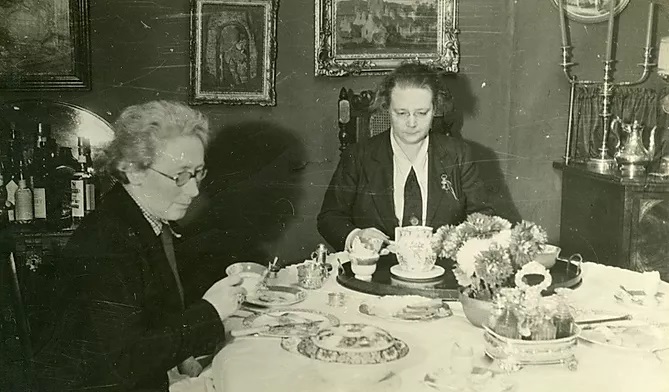 This returns us to consideration of authorship. Authorship is already a complex matter in films as they are the product of several collaborators – director, screenwriters, actors, camera operators, costume designers etc. This is intensified when the film is an adaptation. The authorship of Busman’s Honeymoon is especially convoluted. The film credits Sayers’ novel and Sayers and St Clare Byrne’s play. In addition, it lists that its screenplay was written by Monckton Hoffe, Angus MacPhail and Harold Goldman. But Sayers’ is probably the name we most recognise today. This was even the case at the time of the film’s release – via her 10 previous Wimsey novels and her co-writing of the play.
This returns us to consideration of authorship. Authorship is already a complex matter in films as they are the product of several collaborators – director, screenwriters, actors, camera operators, costume designers etc. This is intensified when the film is an adaptation. The authorship of Busman’s Honeymoon is especially convoluted. The film credits Sayers’ novel and Sayers and St Clare Byrne’s play. In addition, it lists that its screenplay was written by Monckton Hoffe, Angus MacPhail and Harold Goldman. But Sayers’ is probably the name we most recognise today. This was even the case at the time of the film’s release – via her 10 previous Wimsey novels and her co-writing of the play.
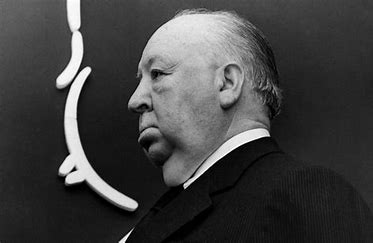 We can usefully compare the authorship of Busman’s Honeymoon to Young and Innocent. This too was a collaborative effort, but director Alfred Hitchcock’s input is probably most foregrounded in the present day. Hitchcock was well-known by the time of Young and Innocent’s release, though he had yet to achieve his almost mythic place in film. By contrast, its source, Josephine Tey’s novel A Shilling for Candles was only the second in
We can usefully compare the authorship of Busman’s Honeymoon to Young and Innocent. This too was a collaborative effort, but director Alfred Hitchcock’s input is probably most foregrounded in the present day. Hitchcock was well-known by the time of Young and Innocent’s release, though he had yet to achieve his almost mythic place in film. By contrast, its source, Josephine Tey’s novel A Shilling for Candles was only the second in  her Alan Grant detective series. We can speculate that the fact that the public was less attached to Tey’s novel may have been part of the reason it was feely adapted – only the first half of the novel appears on screen, and her central detective Alan Grant was mostly absent. After all, the title had to be changed because this no longer made sense as a reference to the murderer’s motive as both of these had been altered.
her Alan Grant detective series. We can speculate that the fact that the public was less attached to Tey’s novel may have been part of the reason it was feely adapted – only the first half of the novel appears on screen, and her central detective Alan Grant was mostly absent. After all, the title had to be changed because this no longer made sense as a reference to the murderer’s motive as both of these had been altered.
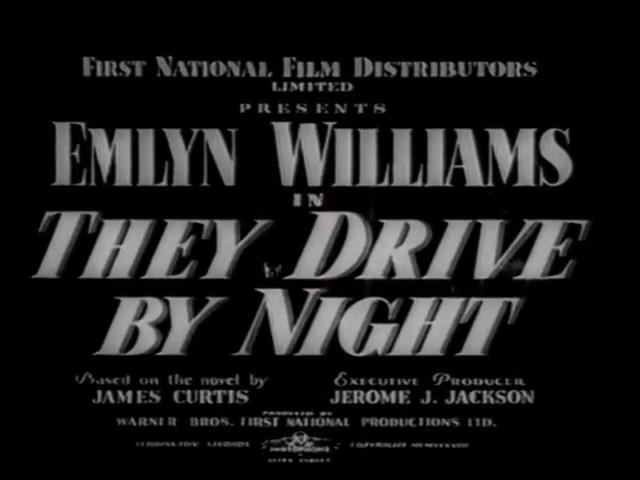 Brief consideration of Busman’s Honeymoon’s director is also necessary. The film’s production is complicated. While the American Richard Thorpe began shooting the film in the UK in August 1939, the outbreak of World War II meant that this was soon suspended. Arthur B Woods, a less known British director, took over when production resumed in March 1940. Although Woods gained acclaim for his noirish They Drive by Night (1938), nearly half of the 27 films he had directed from the start of his career (in 1933) are missing, presumed lost. The reasons for the number of films produced by particular directors, and why some of their films are still extant while others vanish, is of course multifaceted. But in way of comparison, all 10 of the films Hitchcock directed between 1933 and 1940 are still in existence. Woods was also denied the opportunity to cement his reputation as he was killed in action in 1944 while flying with the Royal Air Force.
Brief consideration of Busman’s Honeymoon’s director is also necessary. The film’s production is complicated. While the American Richard Thorpe began shooting the film in the UK in August 1939, the outbreak of World War II meant that this was soon suspended. Arthur B Woods, a less known British director, took over when production resumed in March 1940. Although Woods gained acclaim for his noirish They Drive by Night (1938), nearly half of the 27 films he had directed from the start of his career (in 1933) are missing, presumed lost. The reasons for the number of films produced by particular directors, and why some of their films are still extant while others vanish, is of course multifaceted. But in way of comparison, all 10 of the films Hitchcock directed between 1933 and 1940 are still in existence. Woods was also denied the opportunity to cement his reputation as he was killed in action in 1944 while flying with the Royal Air Force.
We also commented on the impact the film’s casting of actors had on the film. We were surprised that that two US stars played the quintessentially English characters. Cummings was most familiar to us as Rex Harrison’s second wife in David Lean’s adaptation of Noel Coward’s Blithe Spirit (1945). Montgomery had a long career, but we  mostly associated him with high-class characters, such as in Robert Z Leonard’s The Divorcee (1930). Just prior to Busman’s Honeymoon, Montgomery starred in Richard Thorpe’s Earl of Chicago (1940). Montgomery’s character in this film starts off as a gangster. But on the death of his English uncle, he inherits an Earldom and a butler and is propelled into the higher echelons of English society.
mostly associated him with high-class characters, such as in Robert Z Leonard’s The Divorcee (1930). Just prior to Busman’s Honeymoon, Montgomery starred in Richard Thorpe’s Earl of Chicago (1940). Montgomery’s character in this film starts off as a gangster. But on the death of his English uncle, he inherits an Earldom and a butler and is propelled into the higher echelons of English society. Montgomery had previously appeared, as the Irish Danny opposite Rosalind Russell’s Olivia, in Thorpe’s 1937 US film version of Emlyn Williams’ play Night Must Fall. While Busman’s Honeymoon is a British film it, like Night Must Fall, casts Americans as non-American characters, but retains British actors in supporting roles.
Montgomery had previously appeared, as the Irish Danny opposite Rosalind Russell’s Olivia, in Thorpe’s 1937 US film version of Emlyn Williams’ play Night Must Fall. While Busman’s Honeymoon is a British film it, like Night Must Fall, casts Americans as non-American characters, but retains British actors in supporting roles.
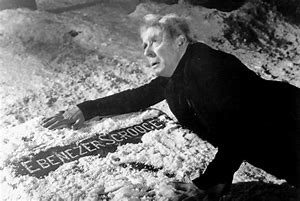 We especially appreciated Sir Seymour Hicks’ performance as the devoted butler Bunter, alongside Robert Newton and Frank Pettingell. Hicks was connected to melodrama through his long-running association with Charles Dickens’ character Scrooge. Meanwhile, Newton and Pettingell both starred in Thorold Dickinson’s UK version of the melodrama Gaslight the same year that Busman’s Honeymoon was released. The connection of these actors to melodrama, and dramatic acting, heightened Montgomery (Peter) and Cummings’ (Harriet) separation from them. We related these to both class differences (the American Montgomery and Cummings play the only upper-class characters) and the film’s genre hybridity (detective comedy and drama).
We especially appreciated Sir Seymour Hicks’ performance as the devoted butler Bunter, alongside Robert Newton and Frank Pettingell. Hicks was connected to melodrama through his long-running association with Charles Dickens’ character Scrooge. Meanwhile, Newton and Pettingell both starred in Thorold Dickinson’s UK version of the melodrama Gaslight the same year that Busman’s Honeymoon was released. The connection of these actors to melodrama, and dramatic acting, heightened Montgomery (Peter) and Cummings’ (Harriet) separation from them. We related these to both class differences (the American Montgomery and Cummings play the only upper-class characters) and the film’s genre hybridity (detective comedy and drama).
As ever, do log in to comment, or email me on sp761@kent.ac.uk and let me know that you’d like me to include your thoughts on the blog.


